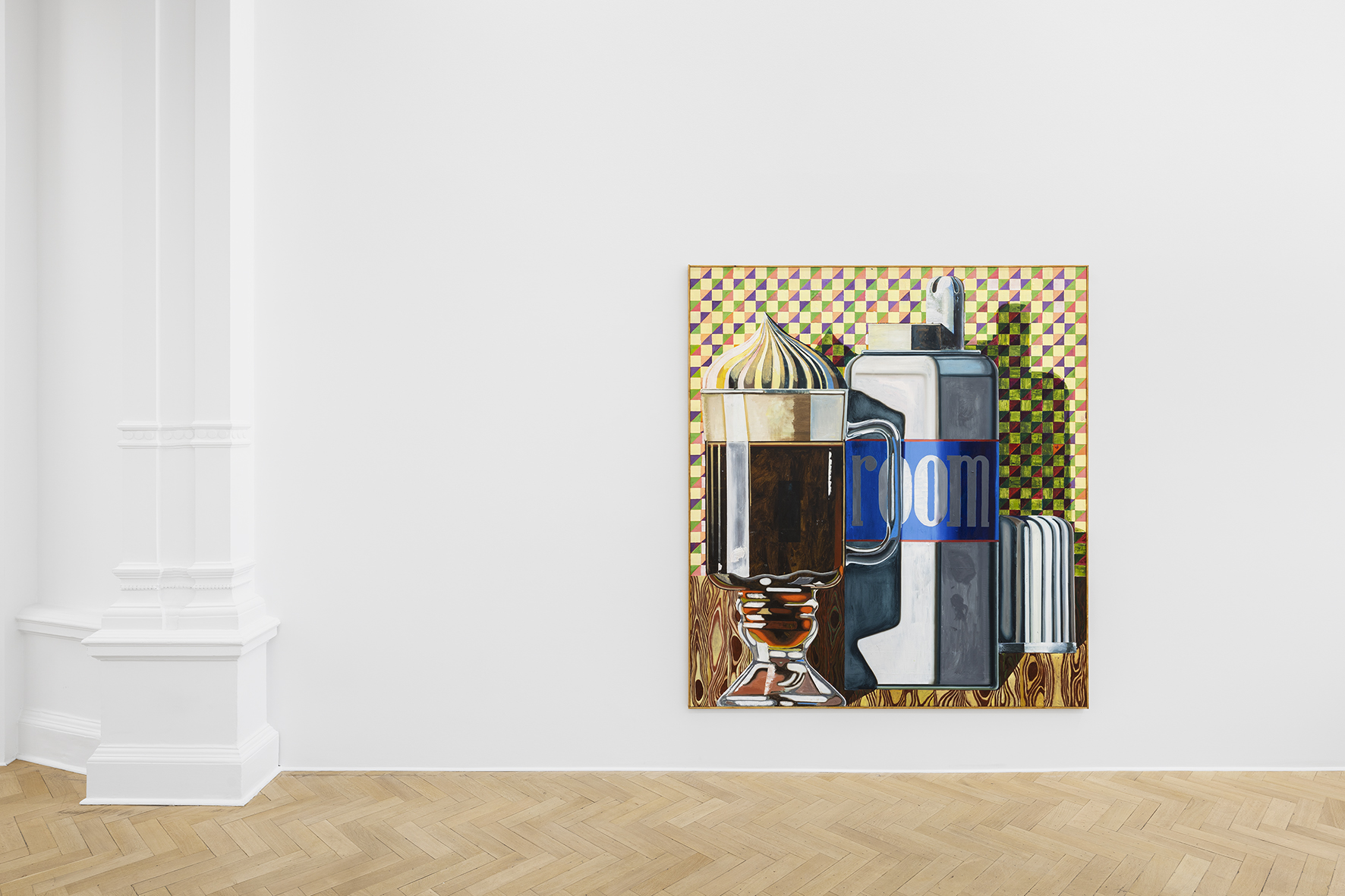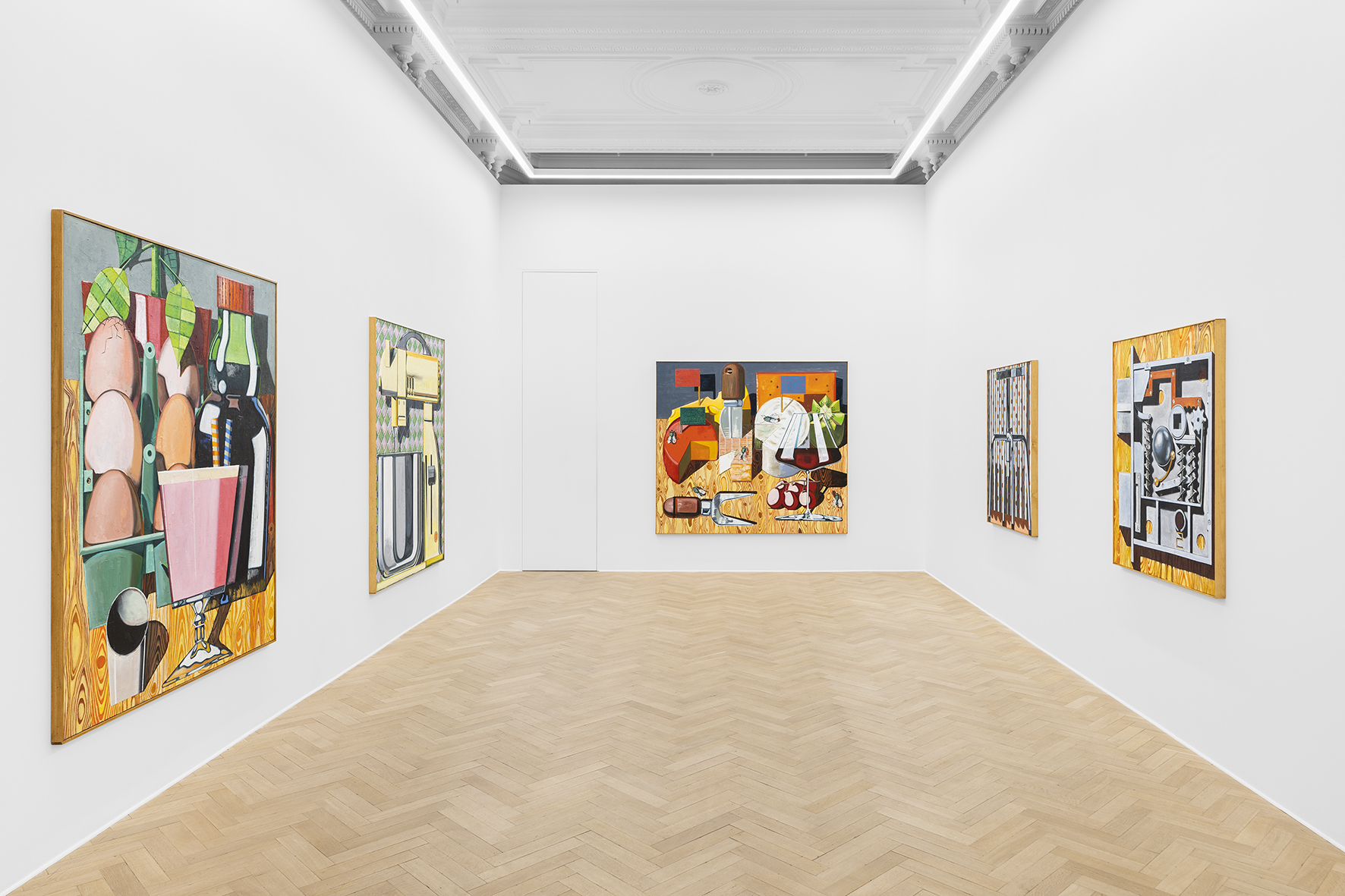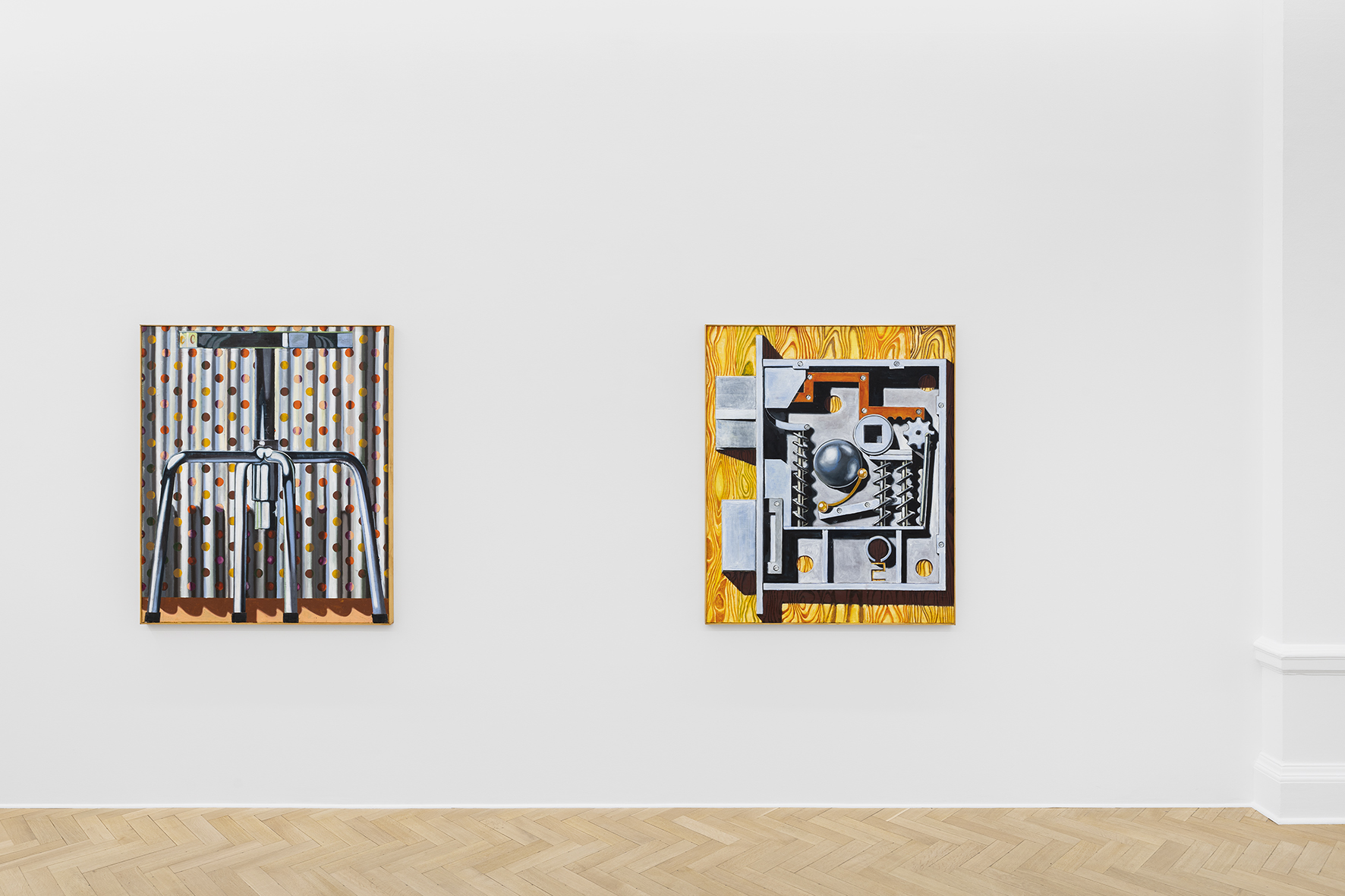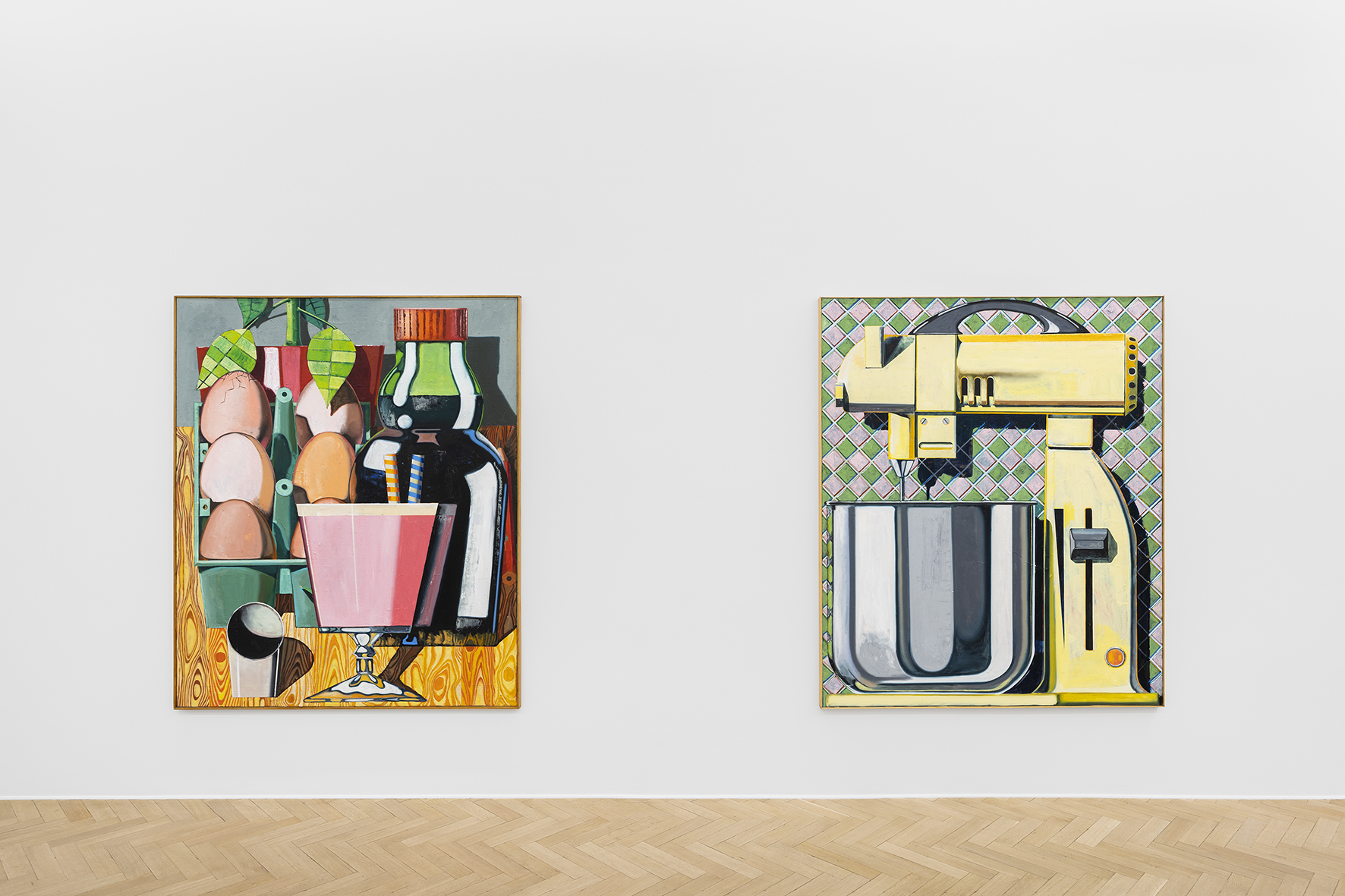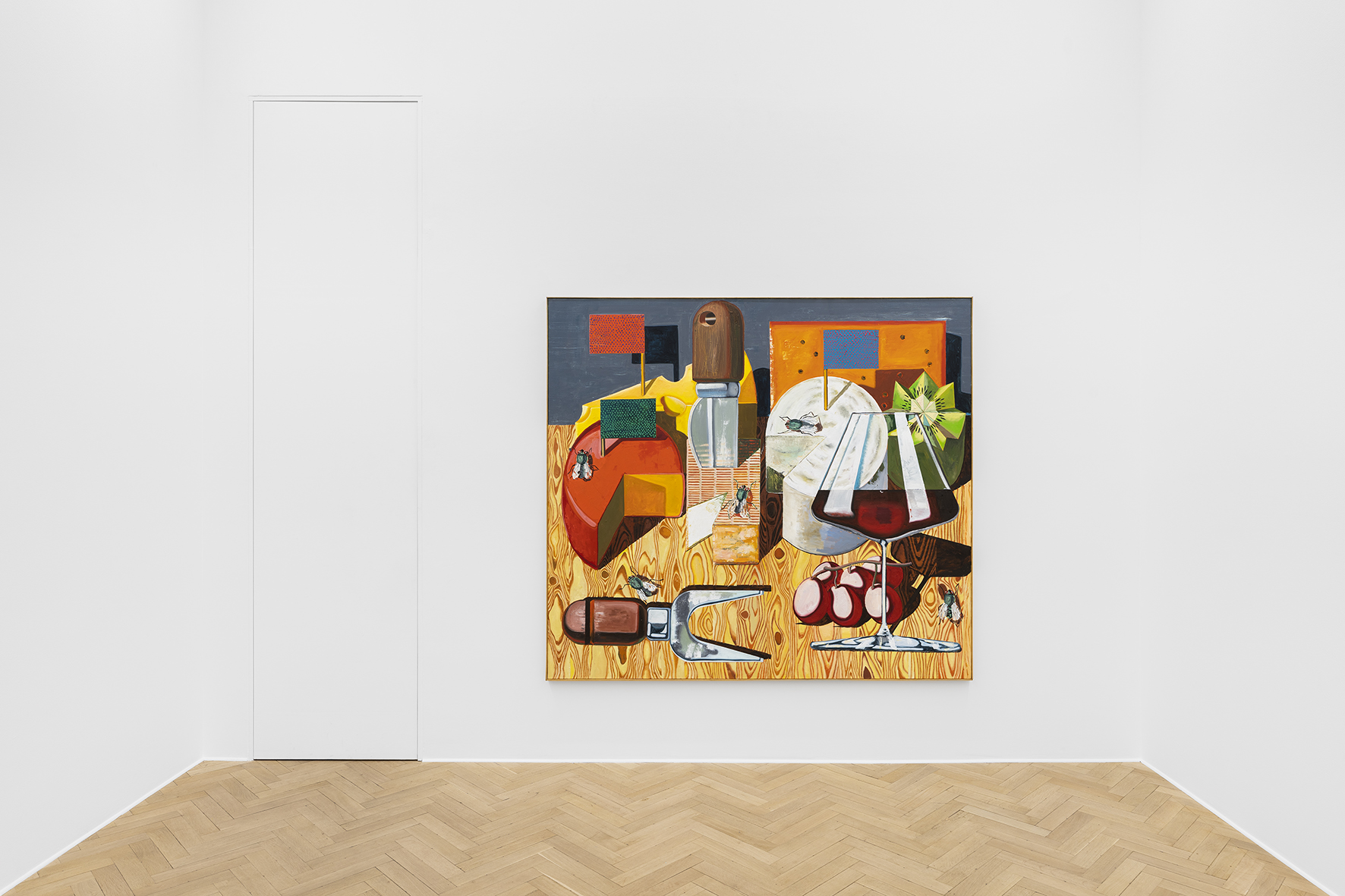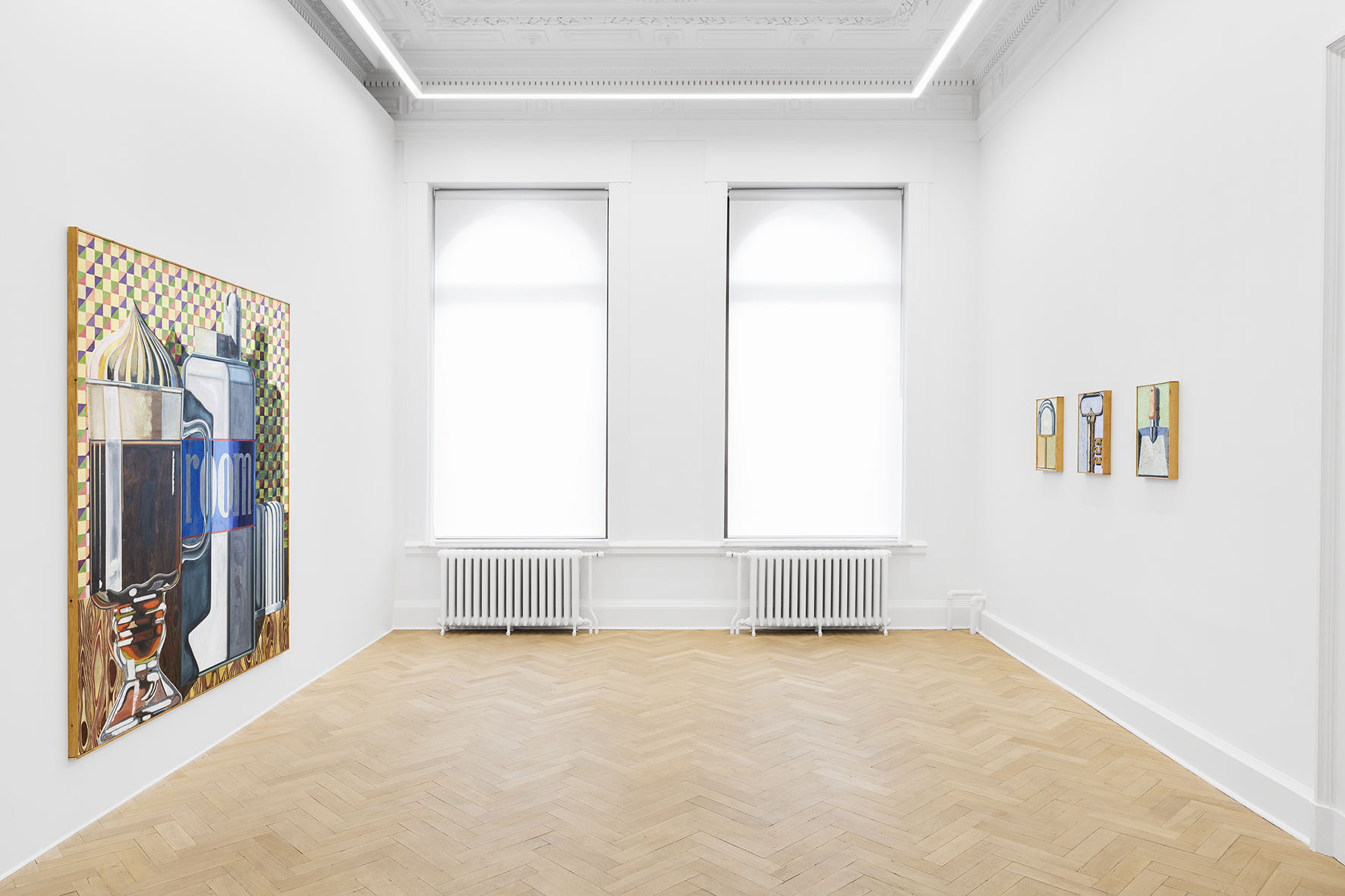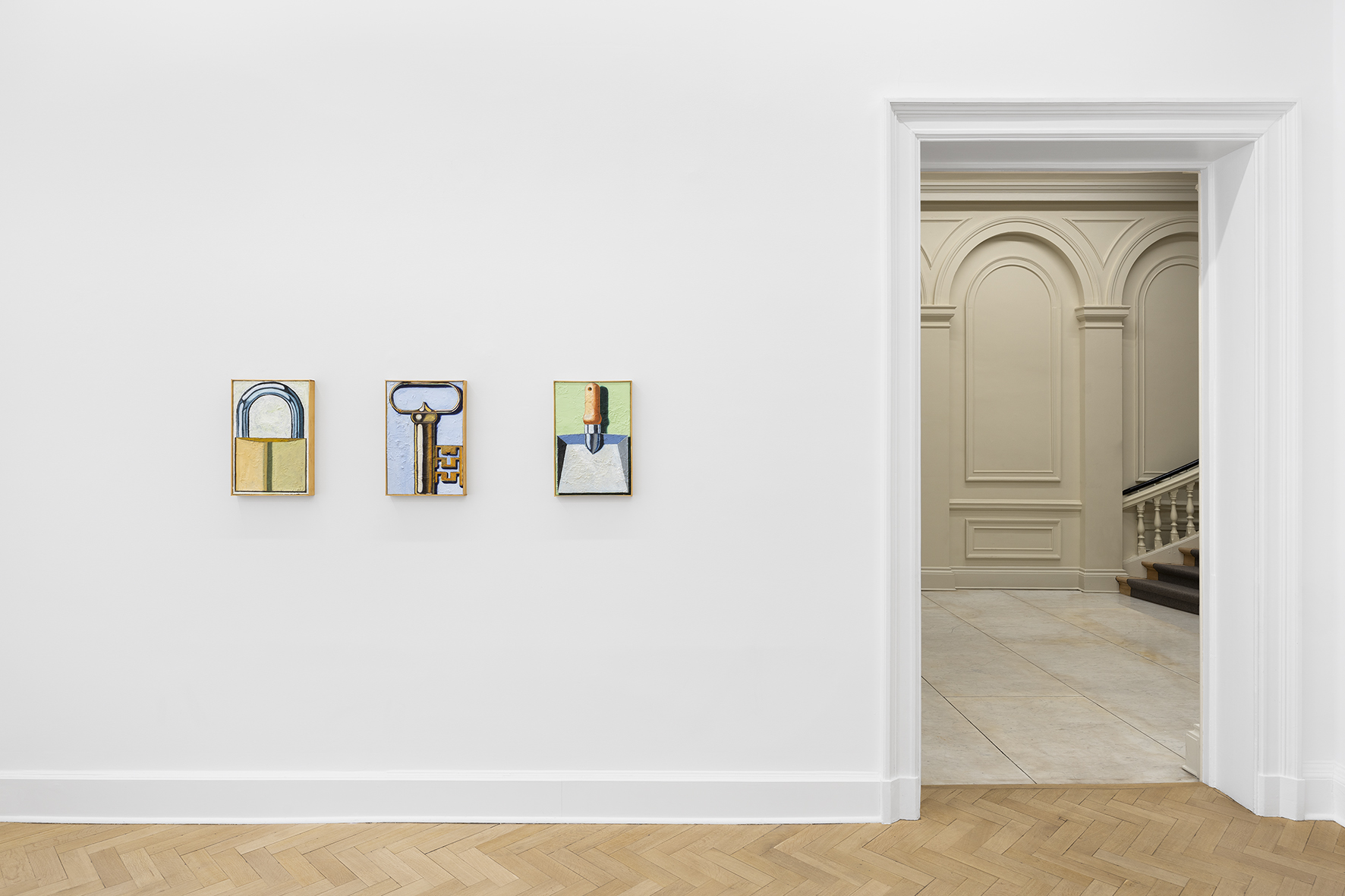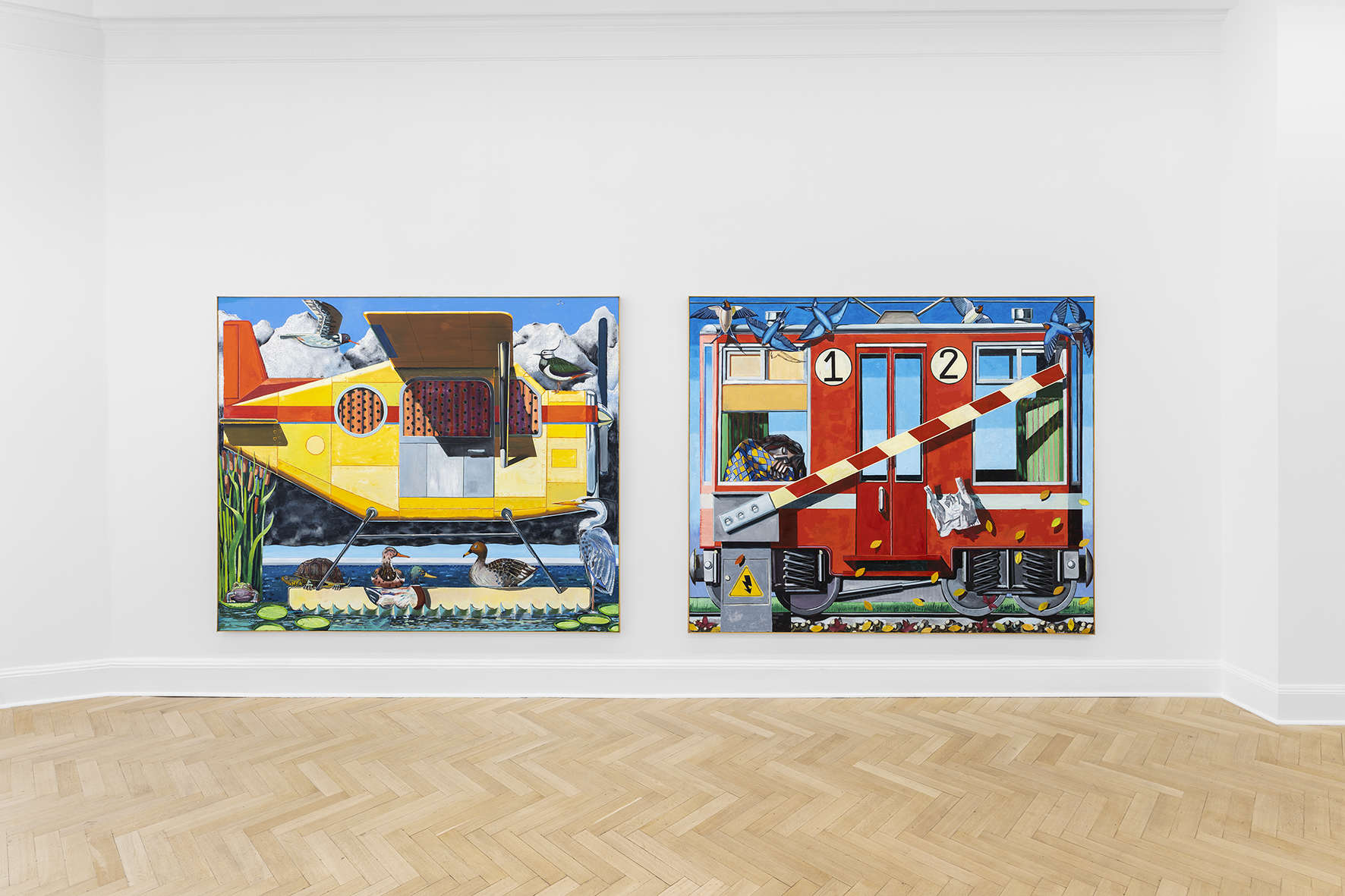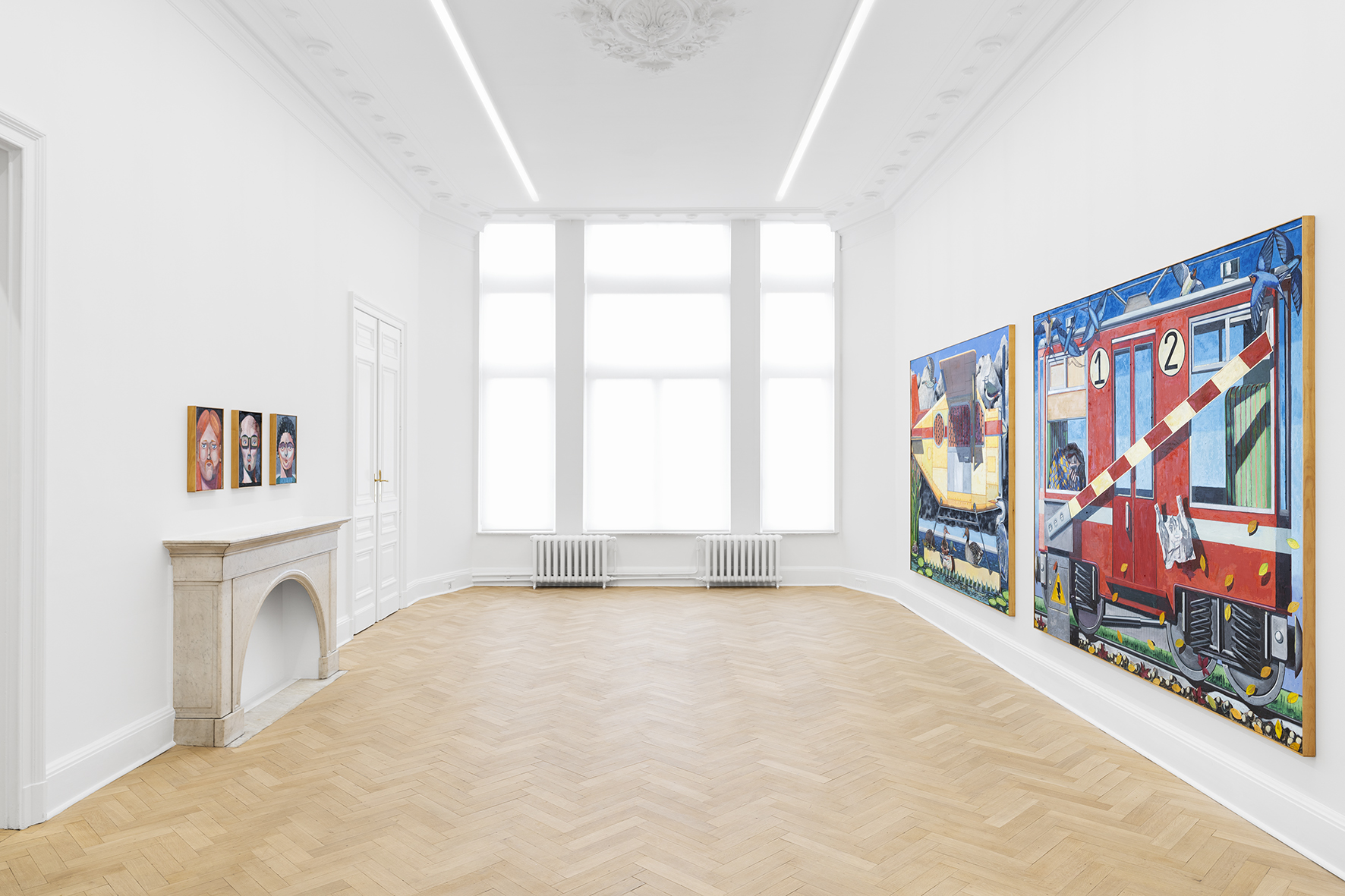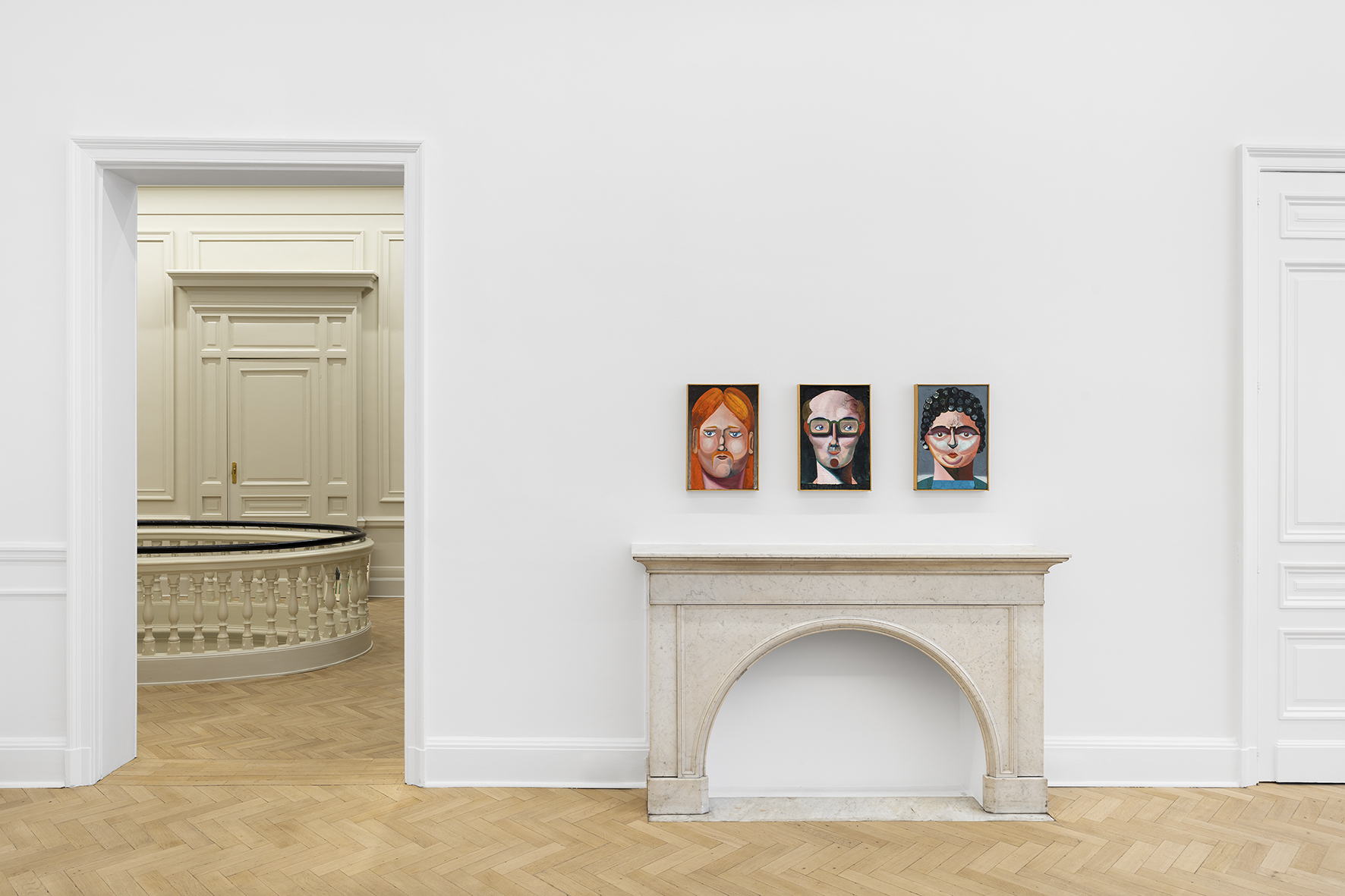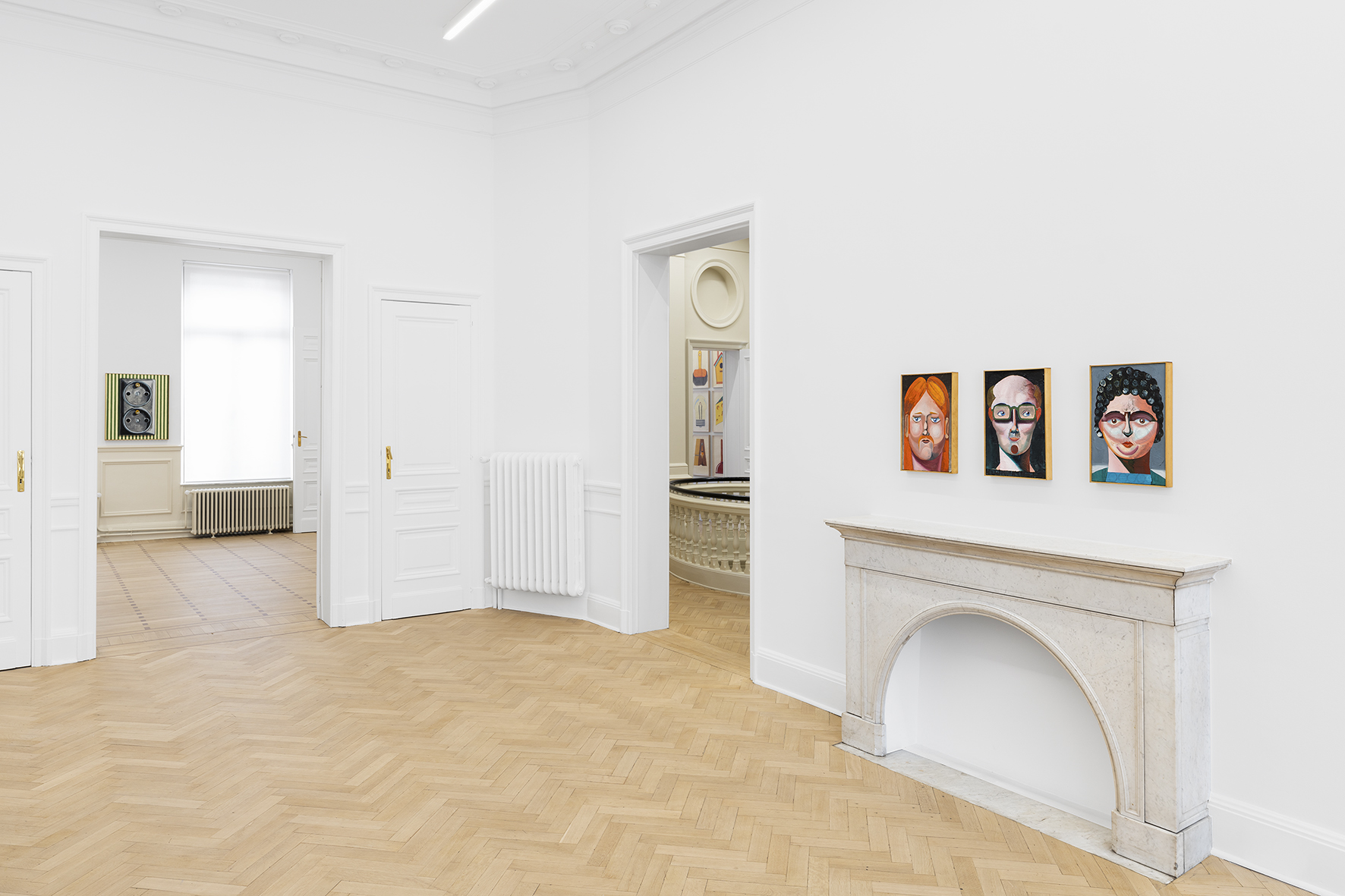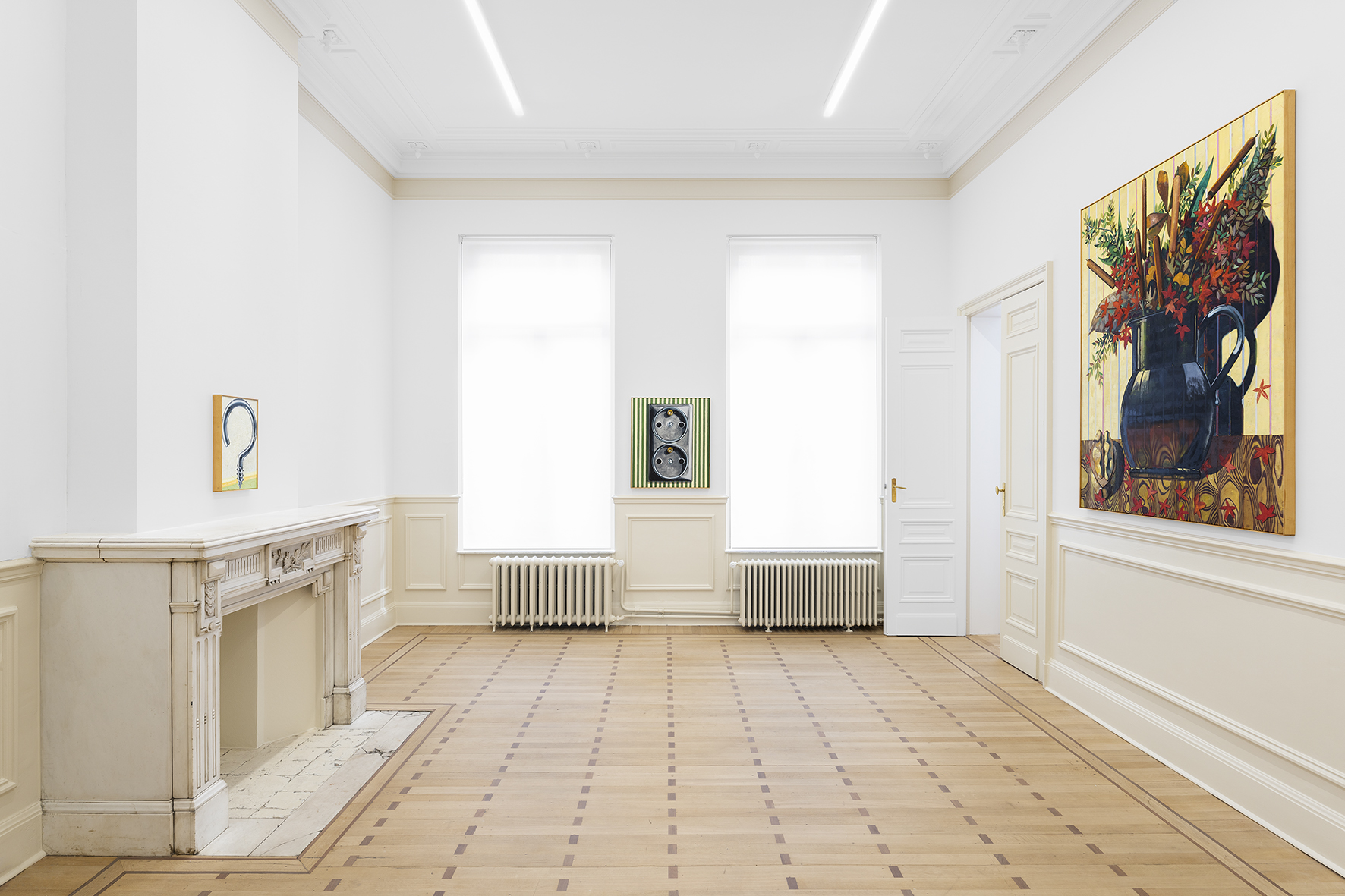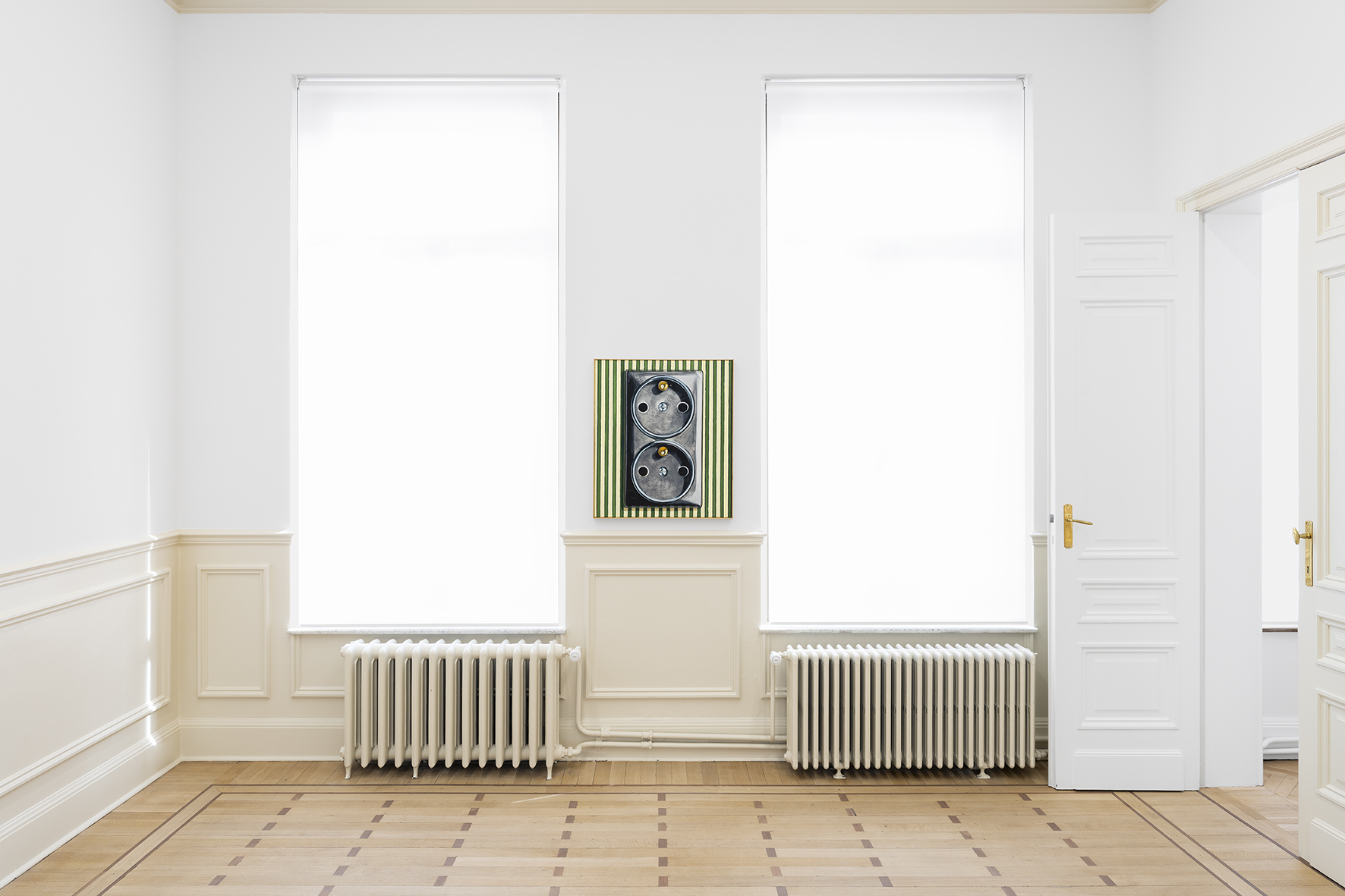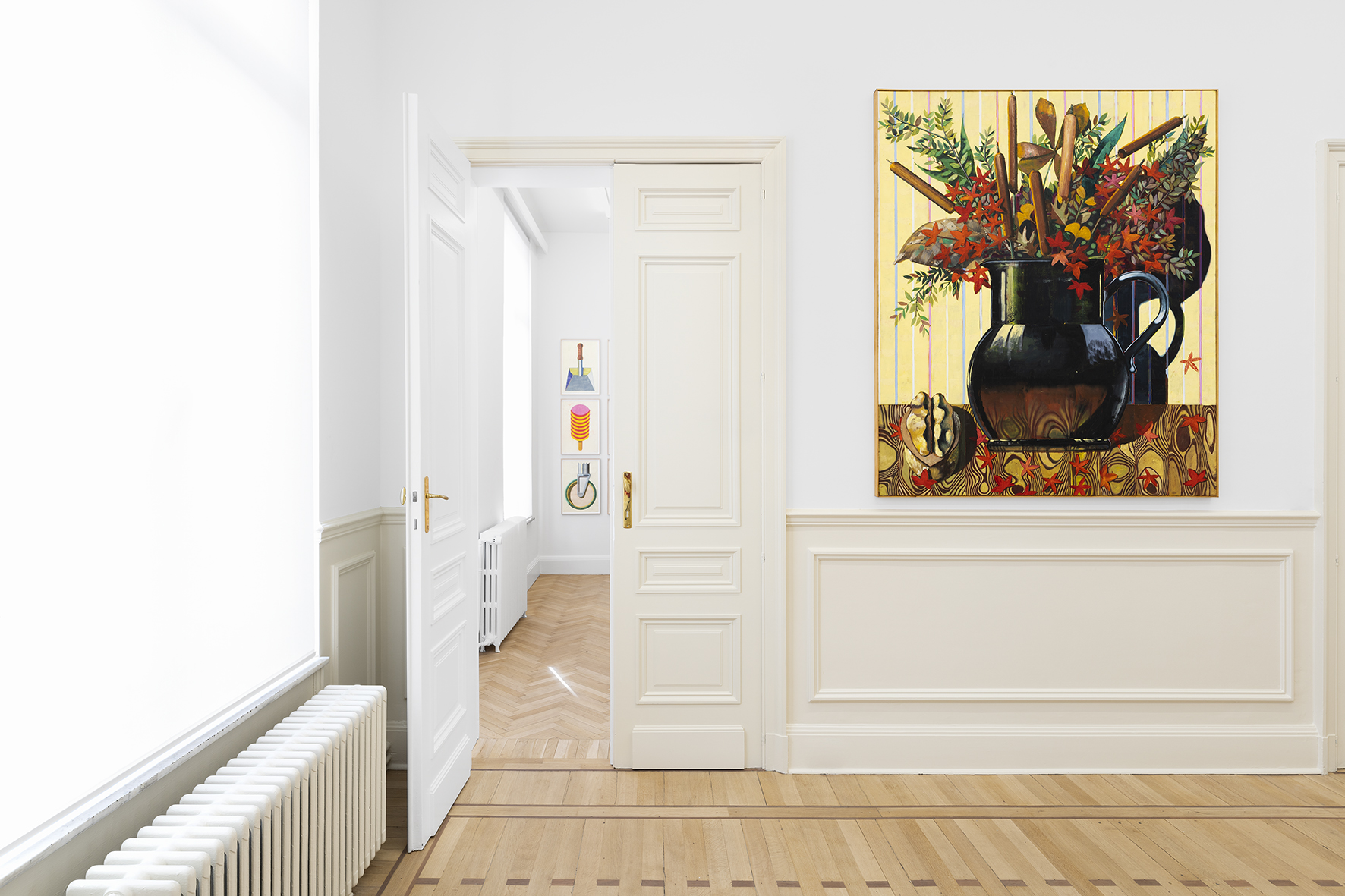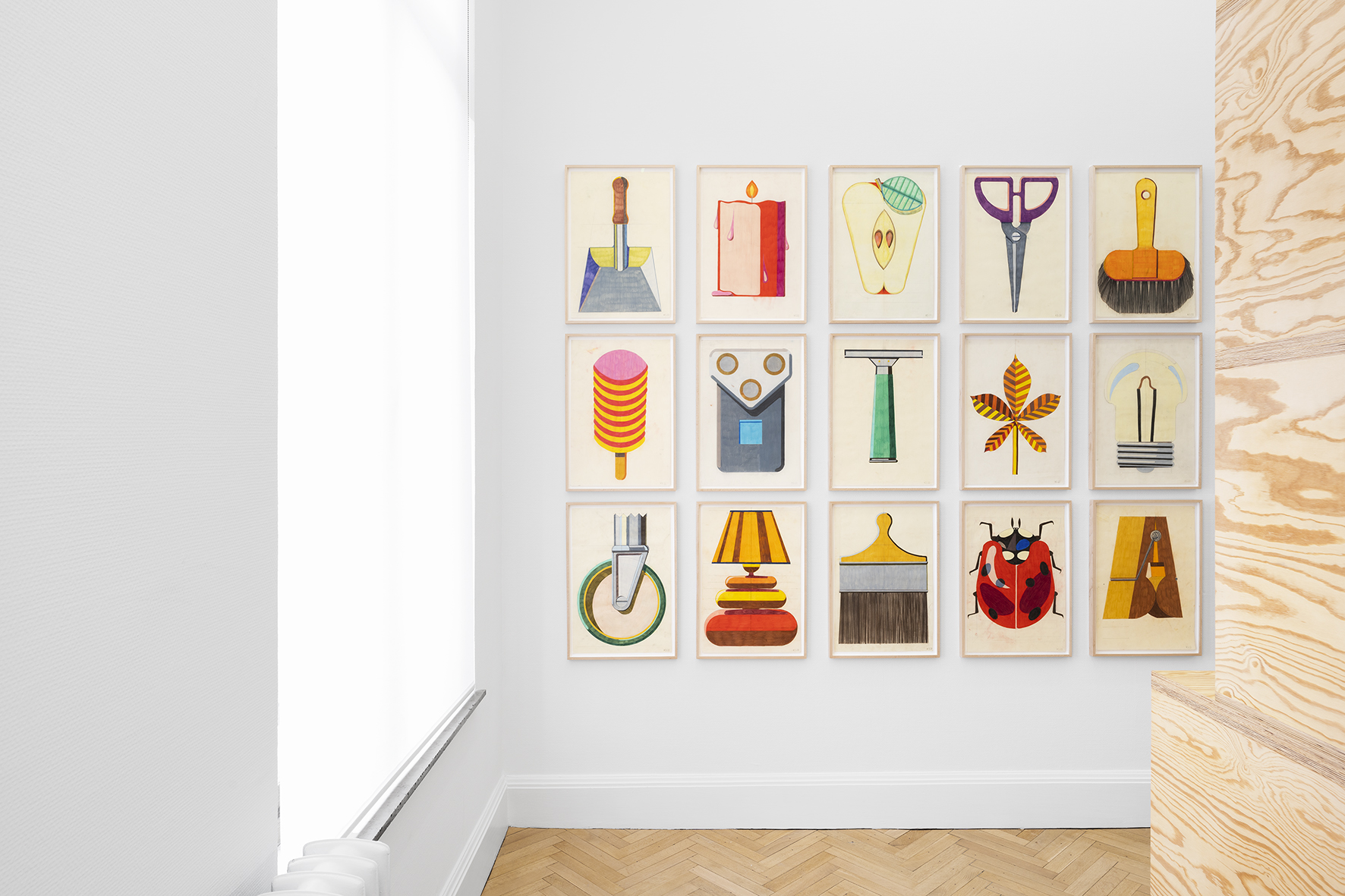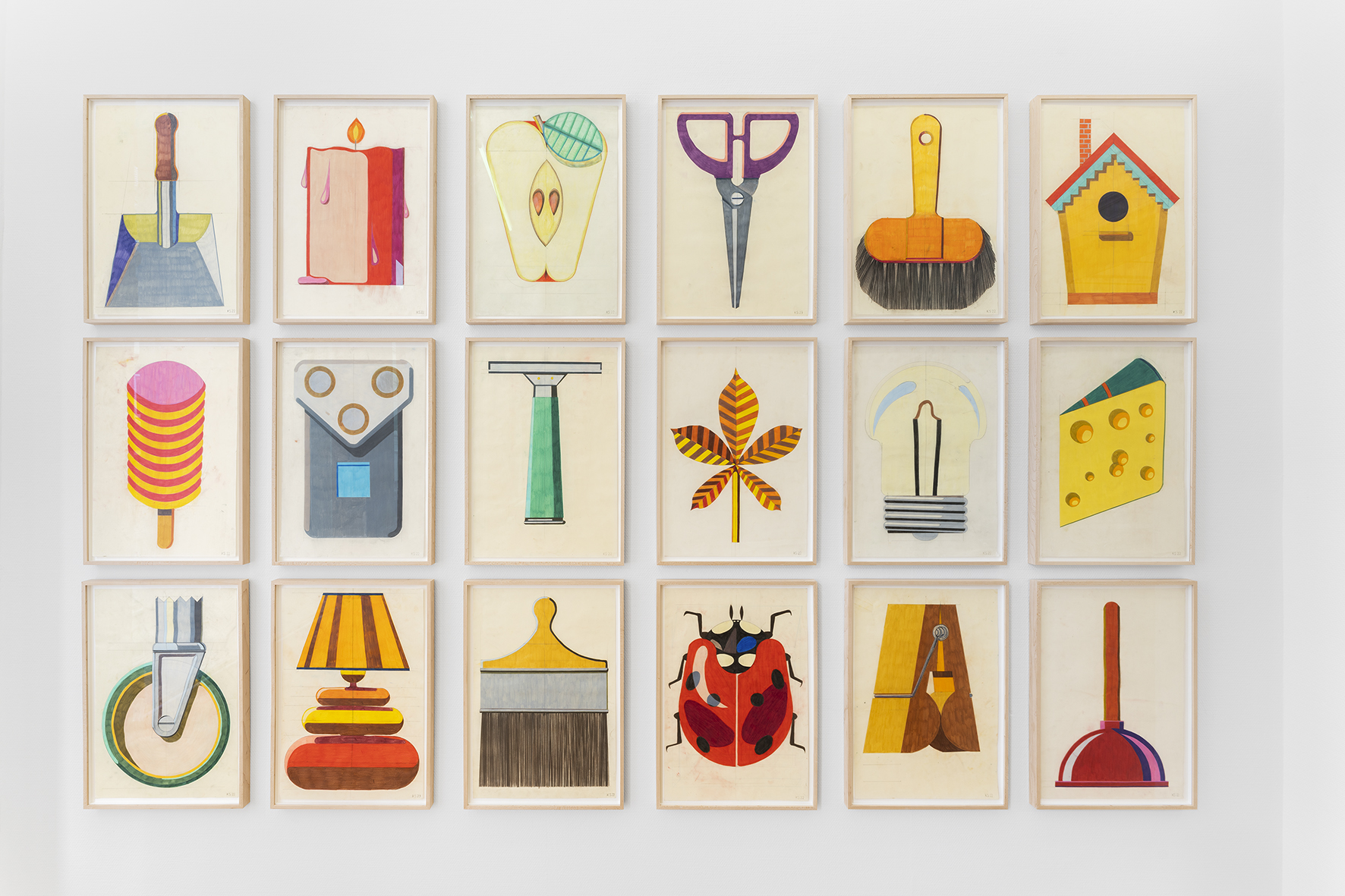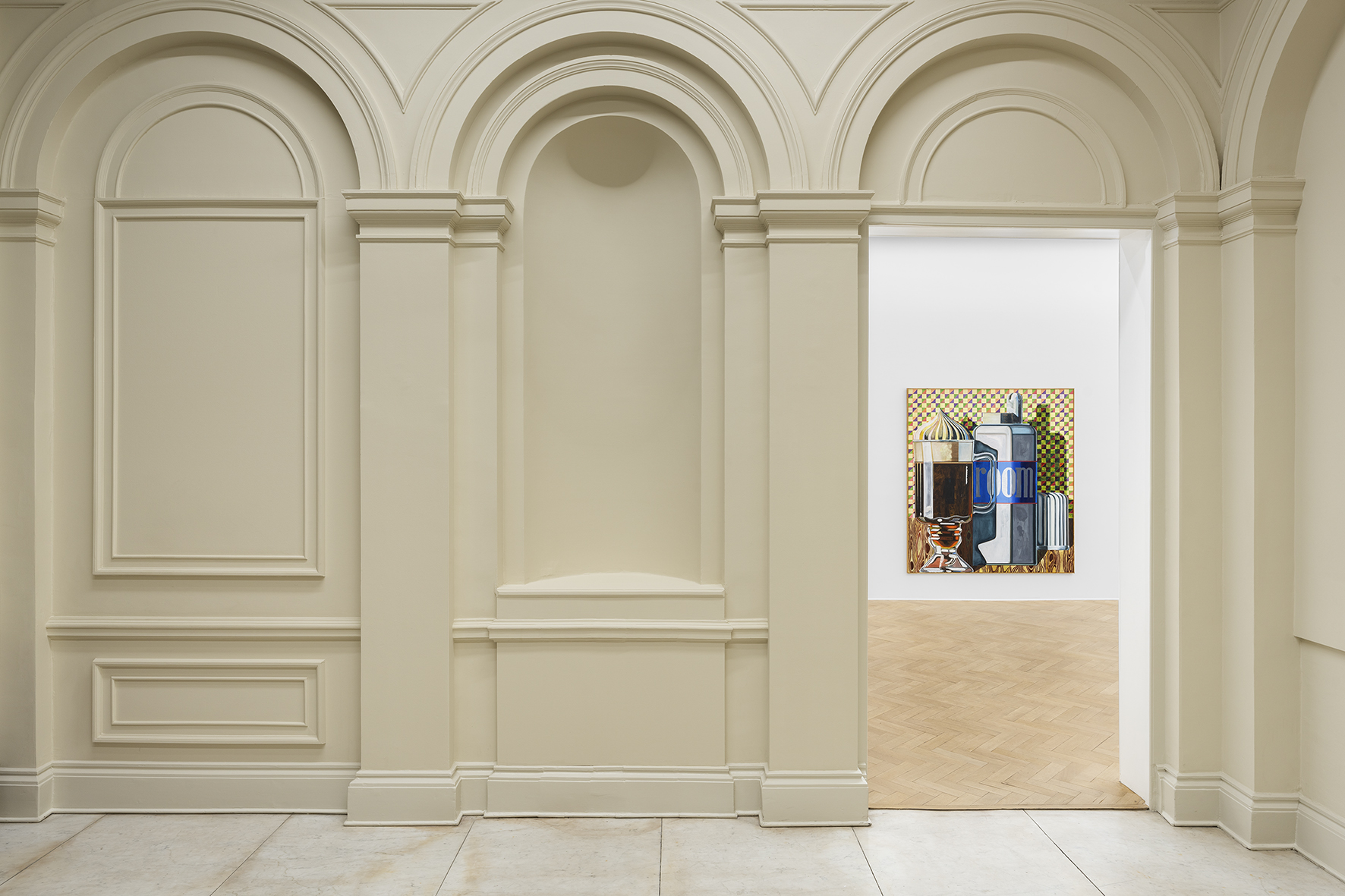
About
EN
Kristof Santy
Playtime
23.03 > 20.05.23
In the 1967 Jacques Tati film whose title is lent to the present exhibition, Monsieur Hulot (played by the director himself) ponders a modernized world to which he no longer belongs, where he no longer understands the customs or concerns of society. As one era disappears, another begins to blossom.
"Playtime", Kristof Santy's first solo exhibition in Belgium, pays homage to Tati's questions, reminding us that "Everyday life is strewn with a dazzling froth of wonders, (...) just as dazzling as those created by writers or artists." [1]
Kristof Santy is a painter particularly interested in the way we look at the everyday. He proceeds like an quotidian entomologist, gleaning an infinite number of details relating to the things that surround him, pinning objects, people, and situations onto his paintings in various sizes and shapes, alternating between portraits, still lifes, and genre scenes. This results in what one might call a "protocol", allowing both himself and viewers to sustain the experience of observation for a longer period of time.
Santy investigates that which is most immediately visible to the eye and the mind. His way of looking at the world is instinctively translated into images, seeing each one isolated from the whole and portrayed as individually observed units. Owing to their variety and nonhierarchical classification, the repertoire of objects seems to be unlimited. A lock, a key, the inside of a lock, several other keys, a stool, a switch, a blender or a hook, a tray of cheeses, a seaplane, a can of whipped cream, or a crab surrounded by egg salad: All become important elements or characters in their own right, made worthy of interest, embodying a sublimated reality in painting.
At the heart of Santy's work lies an attempt to "give an account of the ordinary, daily, banal, anonymous, and barely visible practices that contribute to the construction of a collective culture". [1]
The artist's references can be found on his bookshelf. A great lover of books, Kristof Santy draws from different genres and cultures of representation: the grotesque of classical French cuisine, illustrated technical manuals, art catalogues, folk and vernacular books, and cookbooks from the 1960s and 1970s all constitute an inexhaustible source of study for the painter.
Thus, in Santy's work, we find ourselves immersed in the represented object/image, in its reflection, texture, and color without any prior warning or notice. For example, beyond the characteristic shapes that make it recognizable, the "Mixer" is just as visible as the background that it both hides and reveals. Small mosaic tiles in complementary colors, the texture of stainless steel, the grain of bakelite or molded plastic specific to the 1970s and 1980s. Despite this attention to material detail in Kristof Santy's work, it is no longer the subjects that are of concern here, but the way in which painting, as an exercise in representation, allows us to escape into the mysteries of image-making and the pleasure of painting.
EP.23
[1] de Certeau, Michel, 1984: The Practice of Everyday Life
